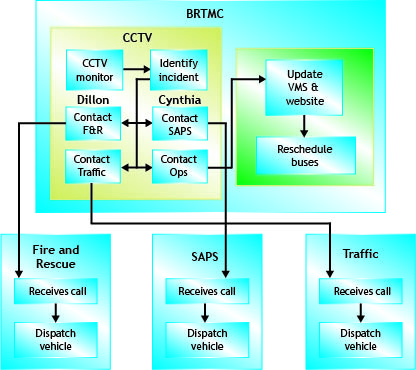27.10Operational Requirements
The world is not to be put in order. The world is order. It is for us to put ourselves in unison with this order.Henry Miller, writer, 1891–1980
For a BRT system that operates for a longer period than normal office hours, it might be required to implement a shift system. In this case there would, however, still be some groups in the BRTMC that would not be required to work outside normal office hours.
27.10.1Shift Systems
As discussed earlier, to comply with local labor laws—that is, maximum hours an employee may work per month, etc.—it might be required in the case of a BRT system that operates from say 06:00 to 21:00 (i.e., for sixteen hours per day) to have staff for three shifts. One team will be off while two teams each work a shift. Also, for critical shift functions where a full-time human presence is required, at least two staff would be required per shift to perform these functions, because time should be allowed for a shift worker to take breaks and to eat.
It is recommended that the following staff should perform shift work (two shifts per day should be adequate for a BRT system that operates for sixteen hours per day as mentioned above, i.e., 05:30 to 13:30 and 13:30 to 21:30):
- Operations Control: Driver and Vehicle Scheduling Officer; Monitoring and Schedule Adherence Operators and Supervisor;
- Automatic Fare Collection: AFC Monitoring, Scheduling, and Schedule Adherence Operators and Supervisor;
- Safety and Security: Surveillance Operators and Supervisor, plus Police and Traffic Police Liaison Officers;
- Call Center: Call Center Agents, Supervisors, and Web Administrator.
It is recommended that the managers of these groups work standard office hours.
Additionally, it is proposed that the outsourced security service should provide the required on-site security personnel on a 24 x 7 x 365 basis.
27.10.2Operational Procedures
For the BRTMC to function optimally, it is imperative to not only provide the staff with the necessary equipment, but also clear instruction on what to do, when, where, and why. Clear operational procedures that empower the staff to perform their jobs are therefore vital to the success of the BRTMC.
The BRTMC workflow specification should detail the collective flow of actions over four main functions.
The four main functions of the BRTMC are:
- Collect data/info;
- Configure the data/info;
- Share data/info with all the relevant stakeholders;
- Monitor performance, safety, and security.
Operational procedures are required to explain how events would trigger specific actions by certain stakeholders to enable the flow of data and information through the system. It would also specify how reports are to be generated. Operational procedures and protocol would provide instructions on how the operator would act when receiving calls, where to find information, and what to do with it. From a management perspective, workflow would detail how informational meaning may be derived from certain views of data and what options could be followed to ensure it flows through the communication system to its proper destination(s).
The general Standard Operating Procedures (SOPs) that should be developed include:
- Incident detection;
- Incident response management;
- Incident confirmation;
- Maintenance request generation;
- Performance management monitoring;
- Station monitoring;
- Vehicle monitoring;
- Safety and security monitoring;
- AFC monitoring;
- Power failure;
- Smoke/fire in TMC actions;
- Security in TMC;
- Request for video footage;
- BRTMC evacuation plan;
- BRTMC disaster recovery and business continuity.
27.10.3Operational Scenarios
Three operational scenarios of how the BRT system should work once operational are sketched below to provide a better understanding of the role that the BRTMC plays in the operations of the BRT system.
27.10.3.1Customer Scenario
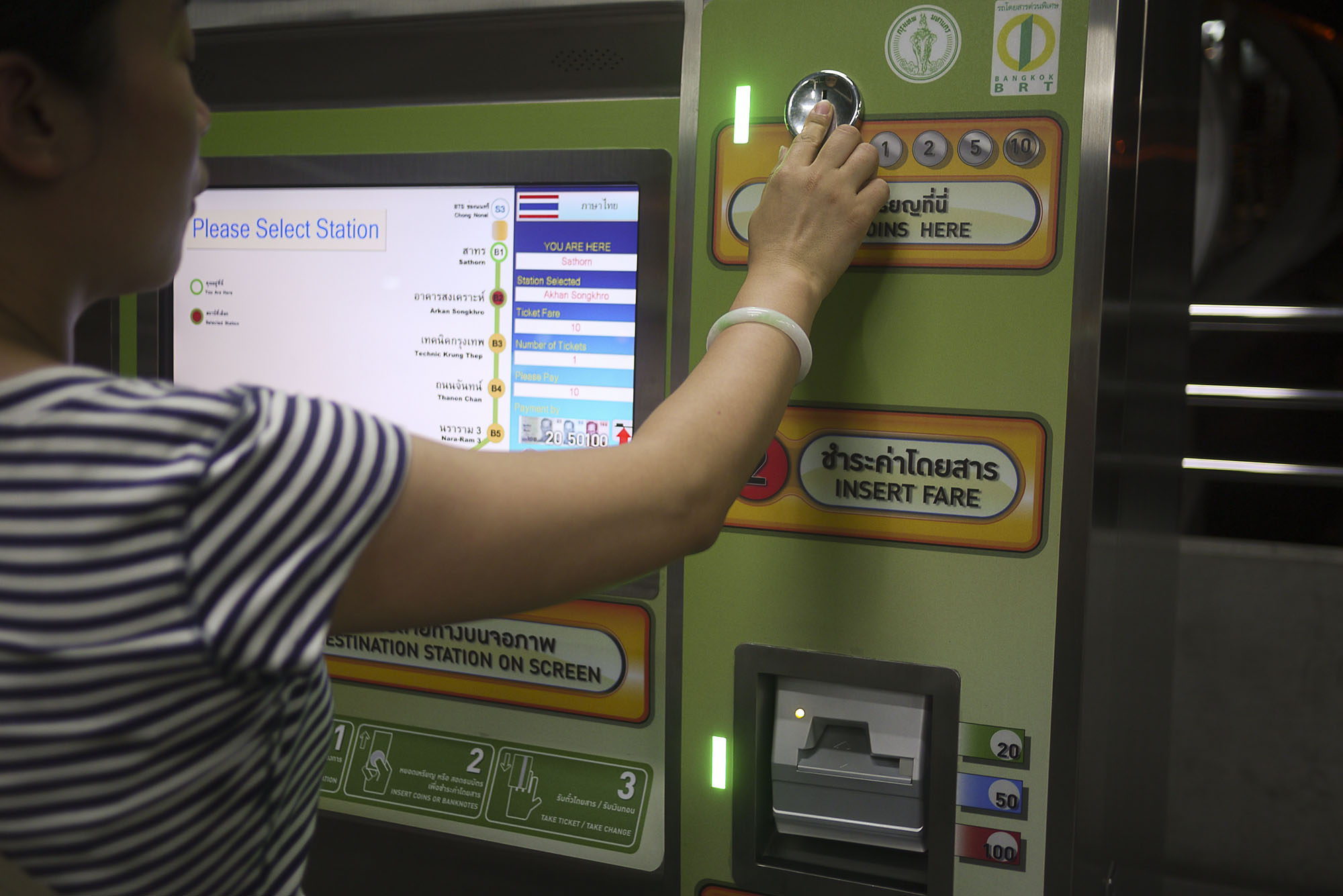
Sipho needs to use the BRT system, because he has a meeting in town A’s central business district (CBD) at 09:00. Sipho logs on to the Internet and views the BRT website, which is administered by the BRTMC’s call center, to determine if the vehicle schedule is on time. The website indicates that all vehicles are running on time.
Sipho uses a feeder bus to trunk station Alpha. Arriving at the trunk station, Sipho realizes that his BRT smart card does not have enough money in order for him to make a trip. At the ticket kiosk, Sipho reloads his smart card with enough credit to travel the rest of the week. At the gate, Sipho touches his card and gains access to the station.
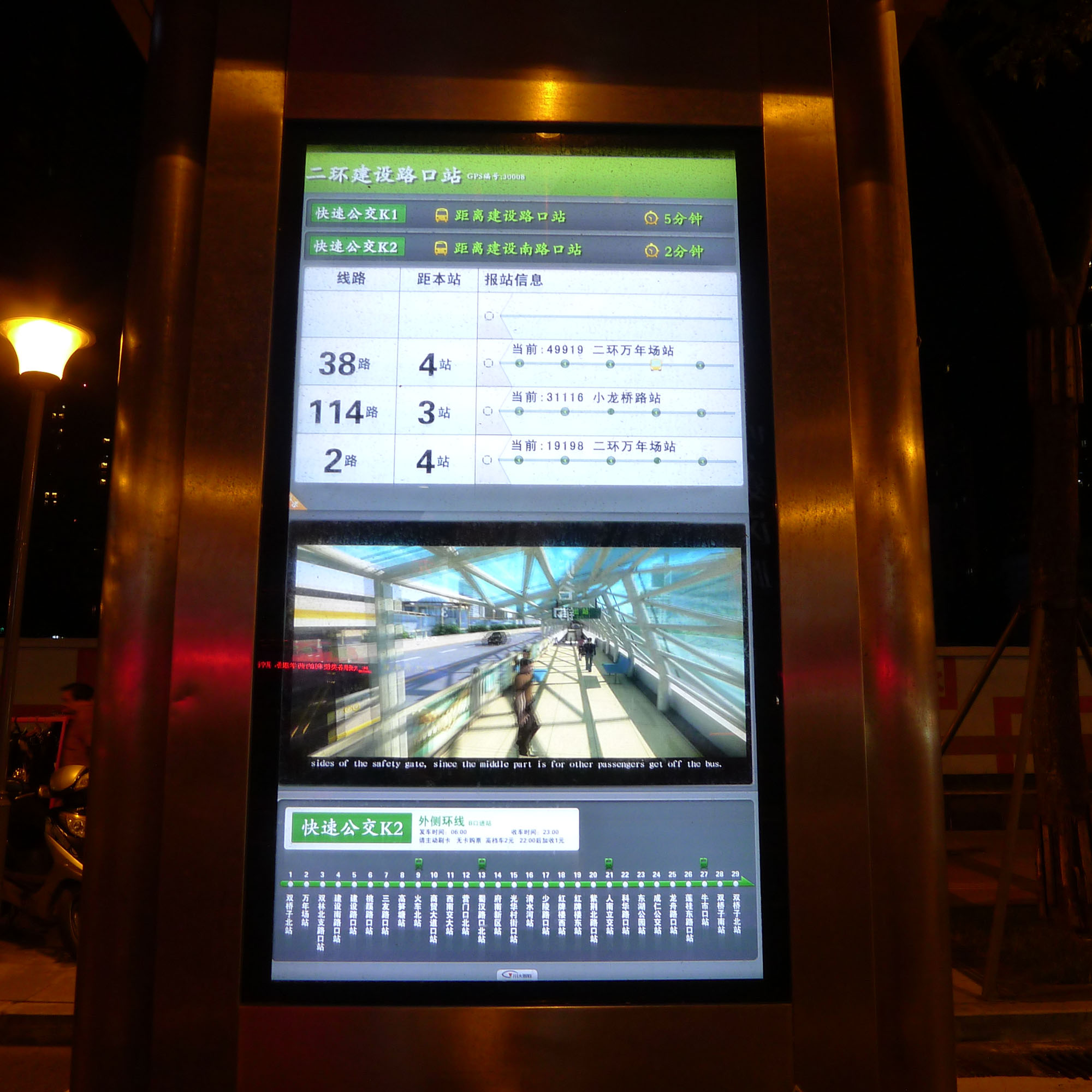
Sipho looks at the time and sees that the Verbal Message Sign (VMS), which is also administered from the BRTMC, indicates that the next express vehicle traveling to town A’s CBD will arrive in five minutes. Sipho decides to buy a newspaper at the newsstand while waiting for the vehicle.
The Automatic Voice Annunciator (AVA), again administered from the BRTMC, announces that the vehicle has arrived. Sipho boards and finds a comfortable seat. The VMS on the vehicle and the AVA announcing each station provide Sipho with the comfort to read his newspaper. The vehicle priority allows the vehicle to clear slow-moving traffic at the intersection. The VMS display and the AVA annunciator warn Sipho that his station is up next. Sipho gathers all his belongings and disembarks the vehicle at the station.
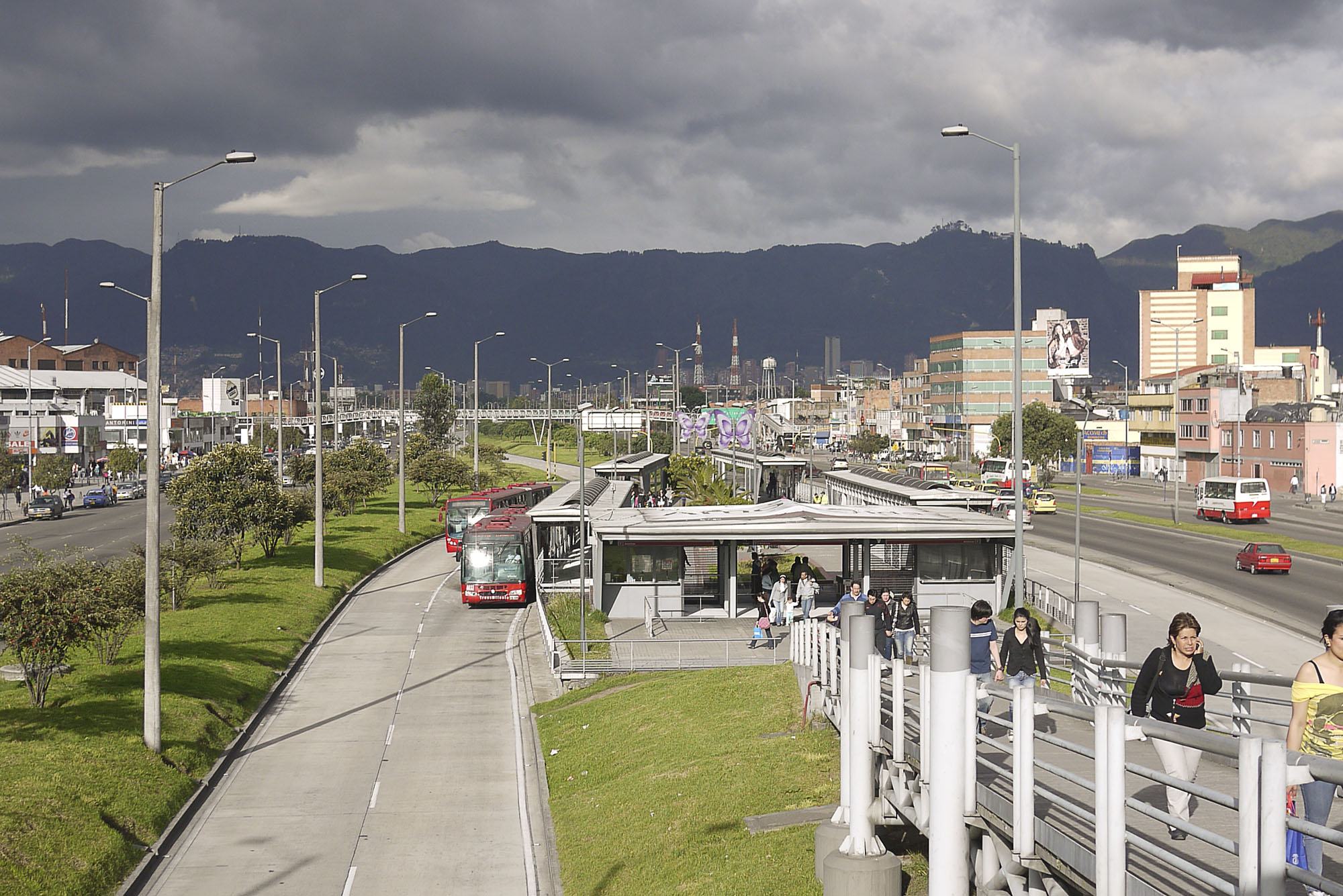
Sipho exits the station again through the gate and walks the two blocks to where his meeting is scheduled. Sipho arrives at his meeting on time, relaxed, and without the morning stress of traffic. Figure 27.15 illustrates the movement of the customer scenario as sketched above.
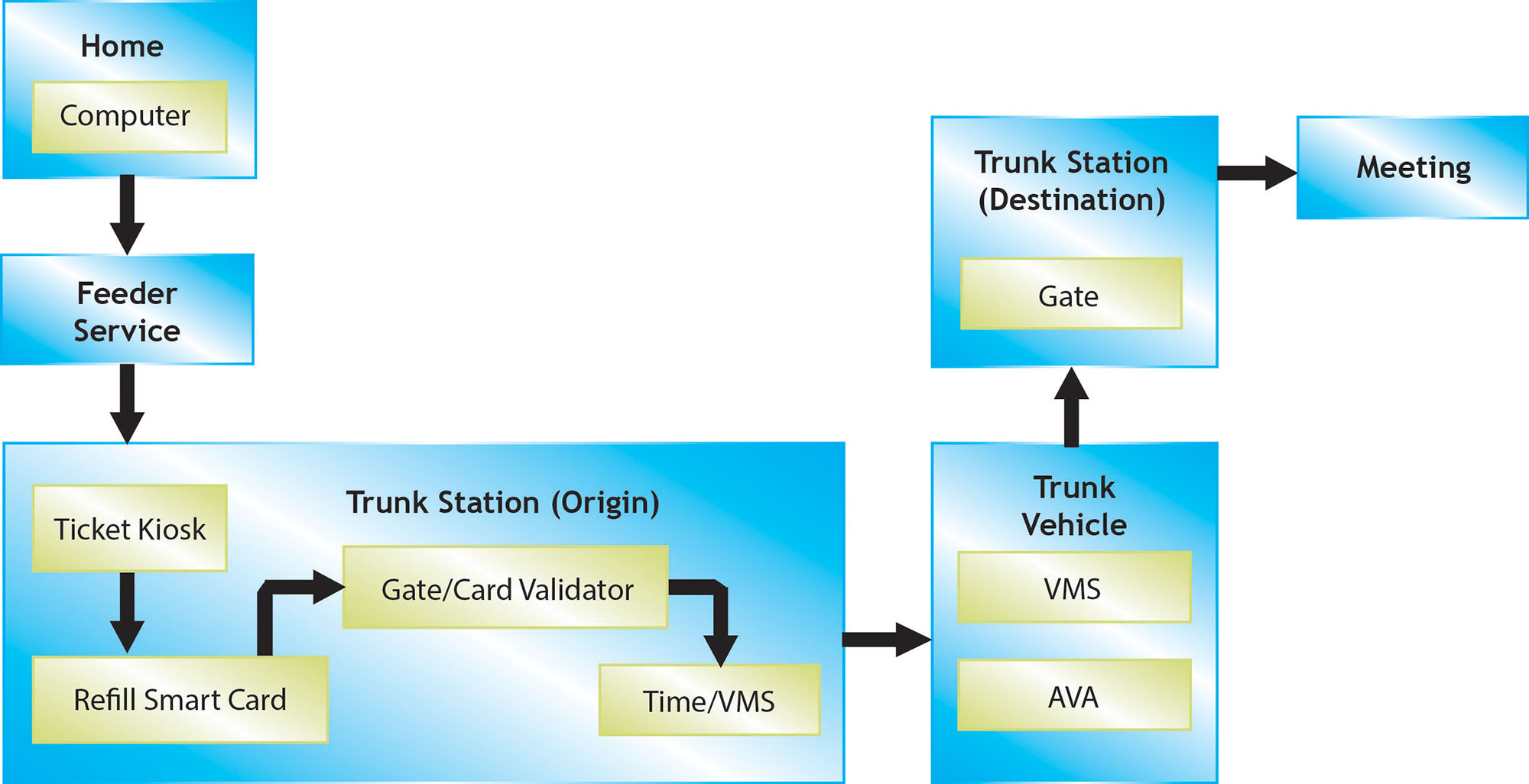
27.10.3.2Maintenance Scenario
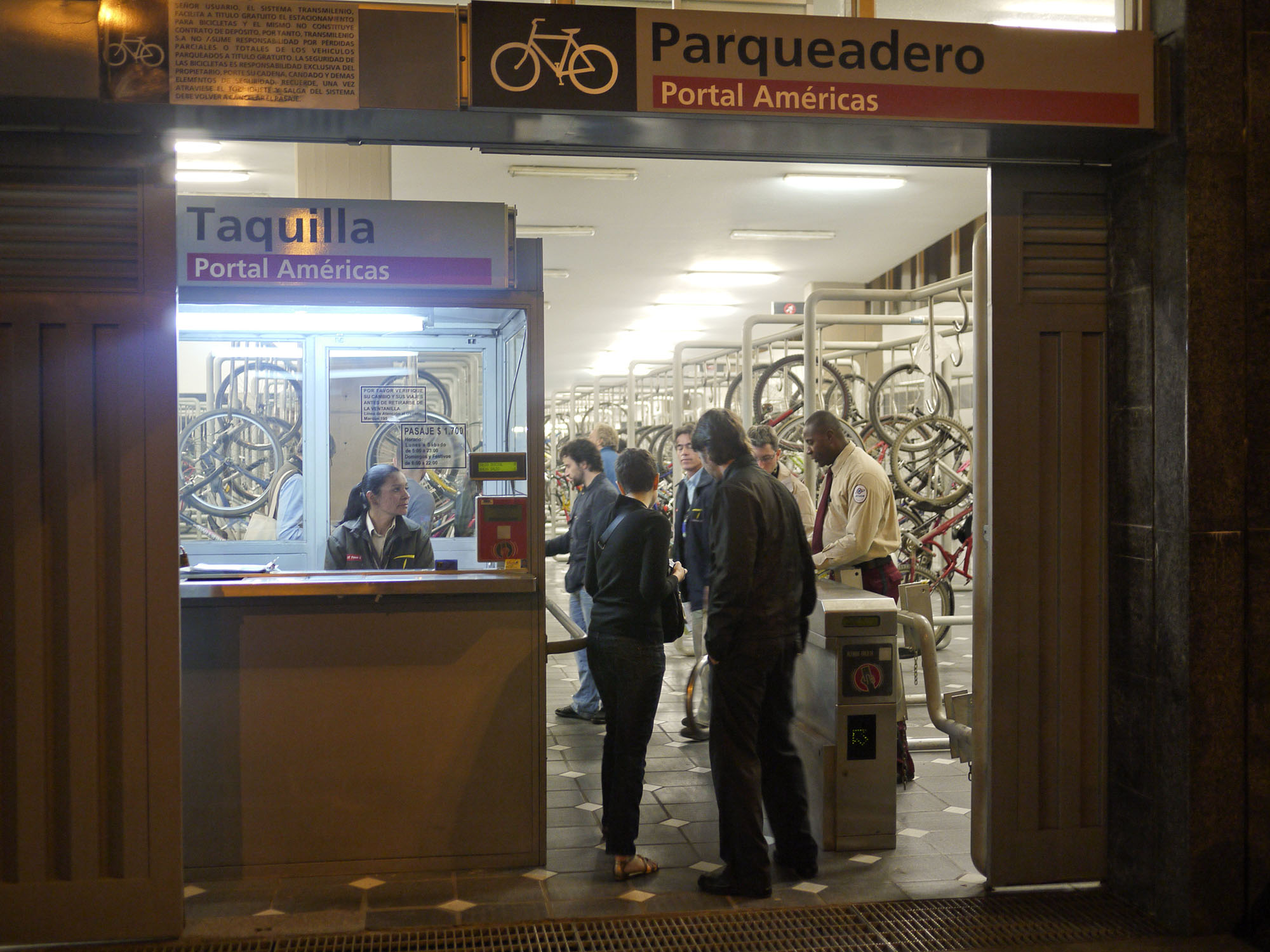
Vuzi is the station officer at one of the trunk stations. One of Vuzi’s duties is to check all equipment at the station before operations start and determine if anything is broken and needs to be repaired.
Vuzi arrives at the station and starts to check the equipment. Vuzi first assesses the gates and finds that one of the card readers at the gates is faulty. Vuzi makes a note and continues the inspection. Vuzi checks the Passenger Display Units (PDUs) and AVA and all of them are functioning correctly. Vuzi continues with the assessment of the ticketing kiosks and finds that all is in order as well. Vuzi checks the automatic doors that allow access to the vehicles and finds that they are faulty. All the other equipment is in order.
Vuzi then contacts the BRTMC immediately and reports to the call center agent that one of the card readers at the gate is not working and that the automatic doors are faulty.
Gareth is the call center agent on duty and logs the call received from Vuzi. Gareth immediately dispatches the card reader and automatic door maintenance teams. They indicate that the problem will be fixed within the hour.
The respective maintenance personnel arrive at the station where Vuzi shows them the problems. They fix the problems and report to Vuzi who goes to inspect the card reader and automatic doors and finds them fixed.
The maintenance staff and Vuzi report back to Gareth at the BRTMC that all faulty equipment has been fixed, and Gareth completes the logged call with a short report.
Figure 27.17 illustrates the maintenance scenario as described above.
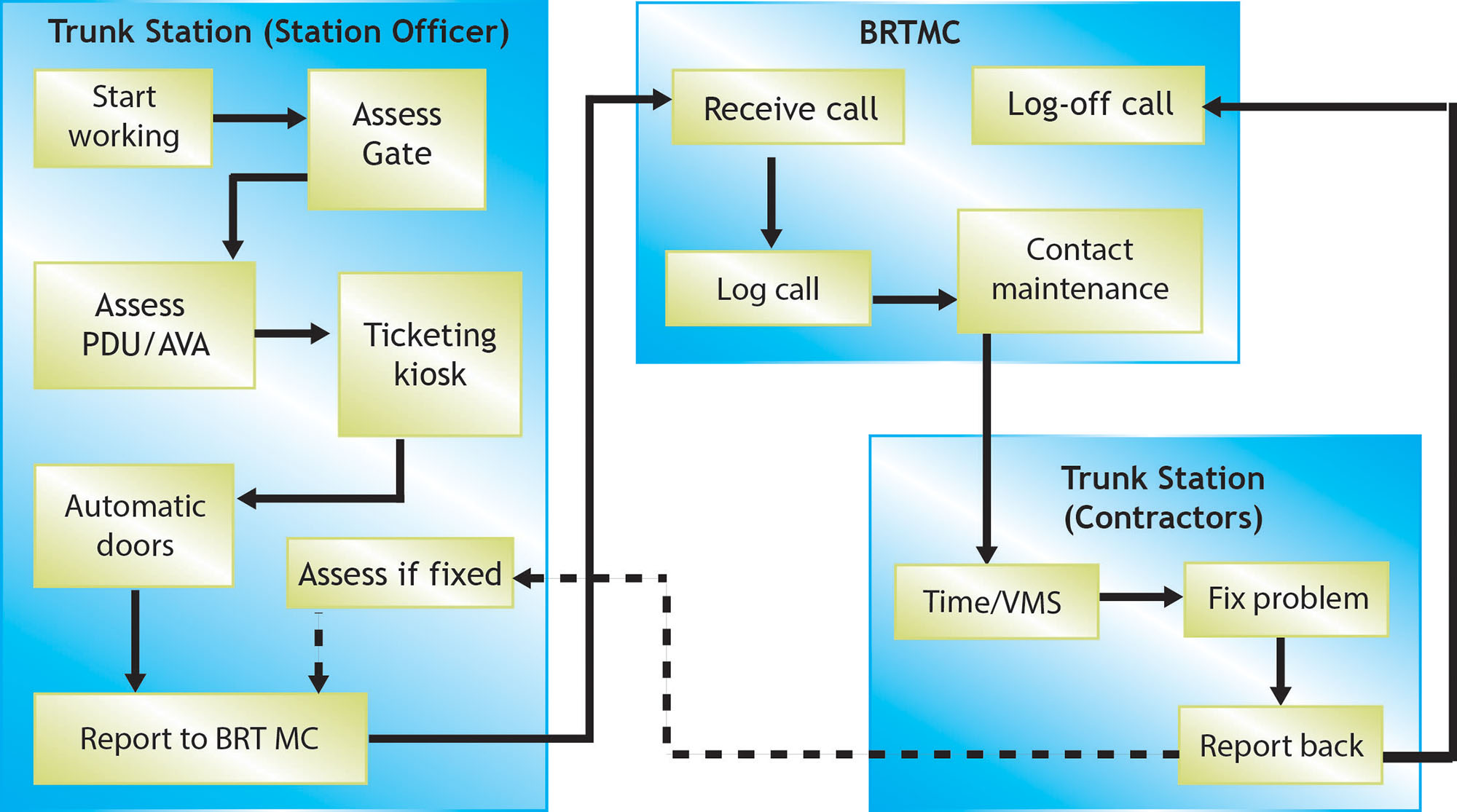
27.10.3.3Emergency Scenario
Dillon and Cynthia are operators working for the Safety and Security group in the BRTMC’s control room. Both of them have been on duty for only two hours, and they are comfortably watching the monitors.
Dillon sees on one of the monitors that something has happened that is out of the ordinary. There is an accident at an intersection involving one of the BRT vehicles and a car. Dillon immediately logs a call to fire and rescue stating that an accident has occurred at the Nelson and Main Street intersection and that it involves a BRT vehicle and a car. While Dillon is logging the call to the fire and rescue, Cynthia logs a call to the police in case there are any fatalities. The fire and rescue department and the police immediately dispatch vehicles to the accident scene.
Once Dillon has completed his call to fire and rescue, he contacts the Traffic Department to dispatch personnel to manage the other traffic. Cynthia has the responsibility to inform the Operations Control group in the BRTMC to reschedule/relocate vehicles and update all VMS at stations. Operations Control informs all station officers and the depot manager of the current standings and contacts the web administrator at the call center to update the information on the website.
The entire time that the accident cleaning process is under way, Dillon and Cynthia review the CCTV cameras. Once the clean-up operation is complete, the vehicles are rescheduled, and operations can continue normally.
Figure 27.18 illustrates the emergency scenario as described above.
